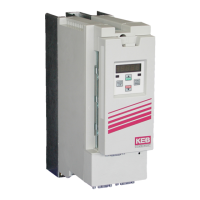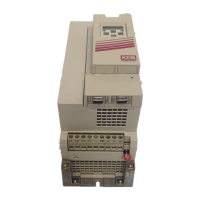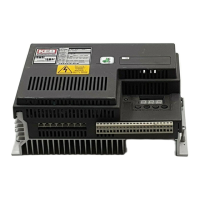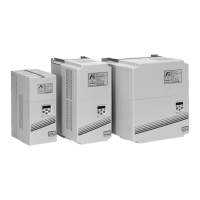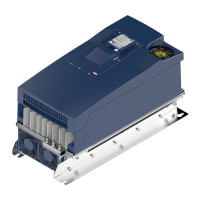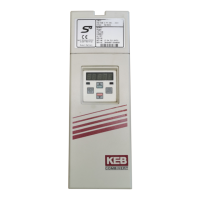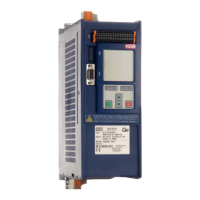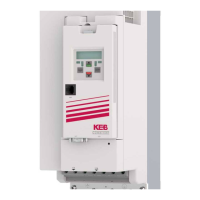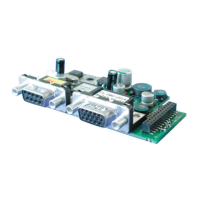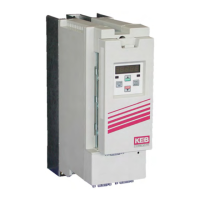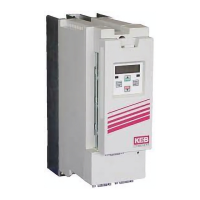26
3. Accessories
3.1 Braking Resistor
Accessories
3.1.1 Selection of the
Braking Resistor
The COMBIVERT F5 inverter can be equipped with an external braking
resistor for limited 4 quadrant operation. The energy the motor regens
into the inverter during deceleration is dissipated through the internal
braking transistor to the braking resistor.
The braking resistor heats up during braking. If it is installed inside a
control cabinet, sufficient interior cooling must be provided! The resistor
should be mounted above and a minimum of 9 inches away from the
inverter or in a separate enclosure!
Different braking resistors are available from KEBCO. They are selected
according to their application requirements. The selection formulas and
technical data of the resistors are listed on the following pages. The
procedure for selecting a braking resistor is outlined below.
1. Establish desired braking time.
2. Calculate braking time without braking resistor (t
Bmin
).
3. If the desired braking time is shorter than the calculated braking
time, it will be necessary to use a braking resistor. (t
B
< t
Bmin
)
4. Calculate braking torque (T
B
) taking the load torque (T
L
) into
account. T
L
is a positive value for friction and windage and
negative for overhauling loads.
5. Calculate peak braking power (P
B
). This must always be
calculated for the "worst case" (n
max
to standstill).
6. Selection of the braking resistors:
a) The resistor should be selected so that P
R
> P
B.
b) P
N
is to be selected according to the duty cycle factor
(d.c.f.).
The braking resistors may only be used for the specified value.
The maximum ON period of the braking resistor may not be
exceeded.
6 % d.c.f. = maximum braking time 8 s
25 % d.c.f. = maximum braking time 30 s
40 % d.c.f. = maximum braking time 48 s
Longer ON periods require specially-designed braking resistors.
Take into account the current through the braking transistor.
7. Check whether the desired braking time is attained with the
selected braking resistor (t
Bmin
).
Note: Consider the capacity of the braking resistor and motor. The
braking torque may not exceed the rated torque of the motor by more than
1.5 times. To realize maximum possible braking torque, the frequency
inverter must be sized for the increased motor current.
